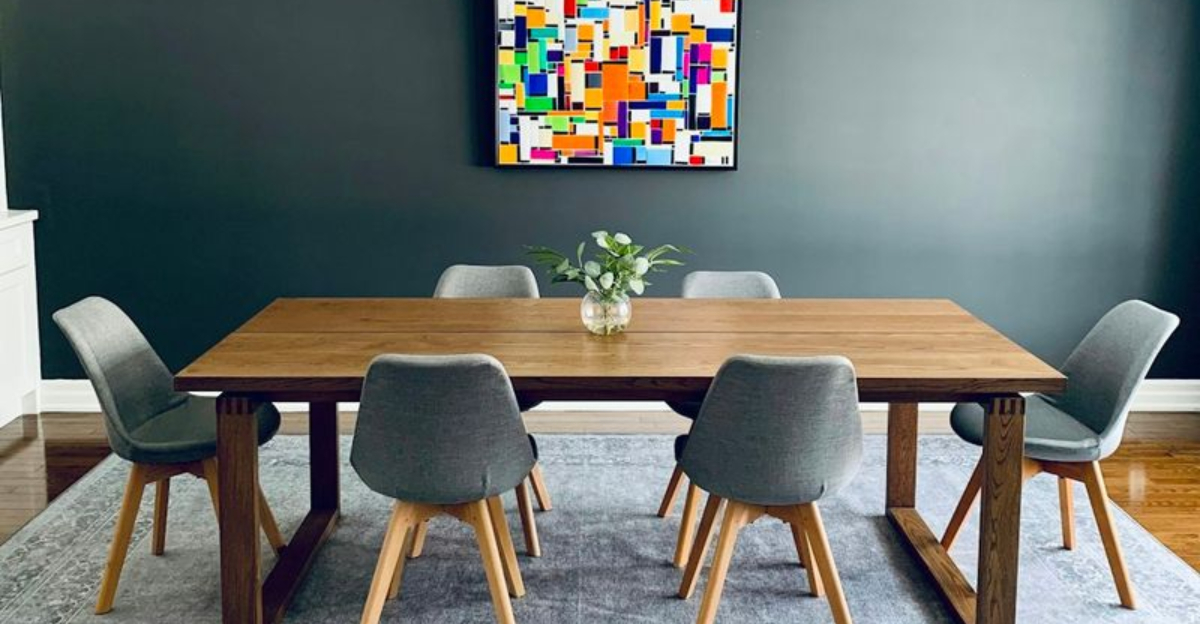Feng Shui isn’t just ancient wisdom—it’s the ultimate design hack for creating spaces that nourish both body and spirit. When applied to your dining room, these principles transform an ordinary eating area into a sanctuary of positive energy and meaningful connection.
What if your dining room could feed more than just your stomach? Let’s boost that good energy and create a space where relaxation flows as easily as conversation.
1. Round Tables Encourage Equal Energy Flow

Round dining tables create magical energy distribution among everyone seated. No sharp corners means no cutting chi (energy), allowing conversations to flow naturally without anyone feeling left out.
Family members and guests receive equal attention at circular tables, fostering deeper connections during meals. Plus, round shapes symbolize unity and wholeness in Feng Shui practice, bringing harmony to your dining experience.
2. Position Chairs with Solid Support

Never place dining chairs with backs against windows or doorways. Solid walls behind seating create what Feng Shui masters call the ‘mountain at your back’ effect—providing security and stability while eating.
People unconsciously relax more when they feel protected from behind. Arrange seating so everyone enjoys this subtle sense of safety. Your guests will linger longer without knowing exactly why they feel so comfortable.
3. Clear Pathways Allow Energy to Circulate

Cramped dining areas create stagnant energy pockets. Allow at least 36 inches between the table edge and walls or furniture—think of it as creating breathing room for your space.
Energy (chi) needs room to dance around diners, bringing vitality to meals. When people can move easily around the table without bumping or squeezing past obstacles, conversation and digestion both improve naturally.
4. Mirror Placement Amplifies Abundance

Strategically positioned mirrors visually double your food, symbolically multiplying abundance in your home. Place a mirror where it reflects the dining table—but never directly opposite the entrance door.
Mirrors also expand smaller dining spaces, making them feel more generous and welcoming. Just avoid positioning where diners see themselves eating, as Feng Shui tradition suggests this drains personal energy during meals.
5. Light Creates Mood and Activates Energy

Harsh overhead lighting creates pressure and speeds up meals unnaturally. Install a dimmer switch to adjust brightness based on occasions—brighter for family dinners, softer for intimate gatherings.
Pendant lights hanging approximately 30 inches above the table create focused energy zones without casting unflattering shadows. Candlelight adds moving energy elements during special meals, activating the fire element that sparks conversation.
6. Plants Bring Vibrant Life Force
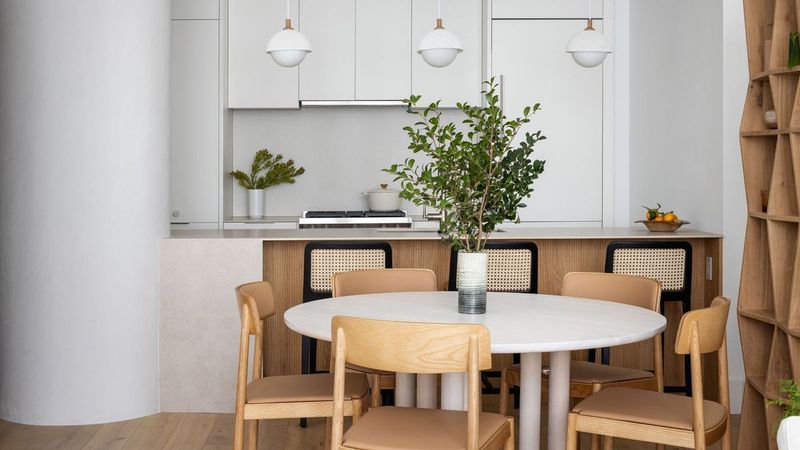
Living plants inject fresh chi into dining spaces, literally cleaning air while energetically purifying the room. Choose rounded-leaf varieties rather than spiky plants, which can create attacking energy.
A small potted plant centerpiece works wonders between meals. For permanent greenery, position larger plants in corners to soften angles where energy gets trapped. Avoid overly fragrant flowering plants that might compete with food aromas.
7. Color Harmonizes with Digestive Energy

Earthy tones like terracotta, yellow, and warm browns stimulate appetite and ground mealtime energy. Avoid stark whites or clinical colors that create an institutional feeling.
Blue tones actually suppress appetite in Feng Shui theory—save those for areas where you want to eat less! Consider painting just one accent wall in a rich, warm hue if you’re hesitant about committing to full color saturation.
8. Keep Décor Intentionally Minimal

Cluttered dining spaces create cluttered digestion and scattered conversations. Limit wall decorations to one striking piece of art depicting abundant nature or peaceful scenes—never stormy waters or conflict.
Tabletops should remain mostly clear between meals, allowing energy to settle. When not in use, a single beautiful object or low bowl of fruit makes a perfect centerpiece, symbolizing plenty without overwhelming the senses.
9. Avoid Electronic Distractions
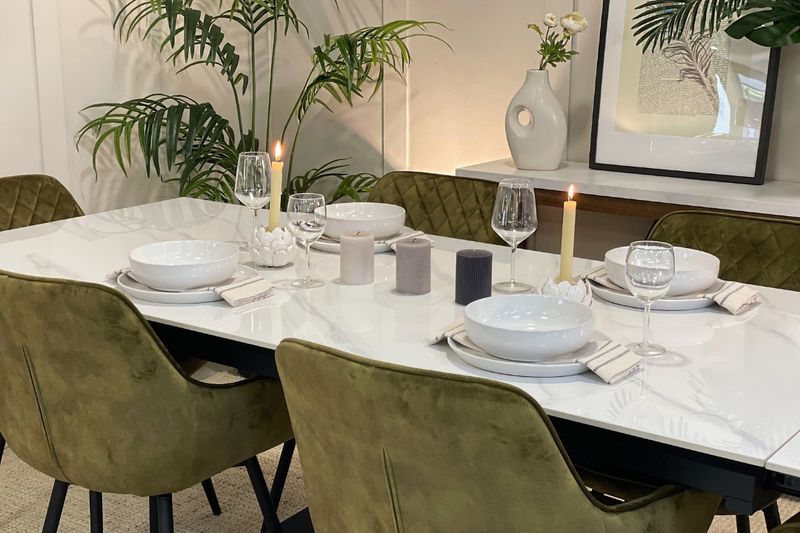
TVs, computers, and visible charging stations fracture attention and disrupt the nurturing energy of shared meals. Keep all screens out of the dining zone to honor food and company.
Establish a phone basket near—but not on—the dining table where devices rest during meals. Many families report dramatically improved connections once implementing this simple rule, creating space for genuine presence rather than divided attention.
10. Balance the Five Elements
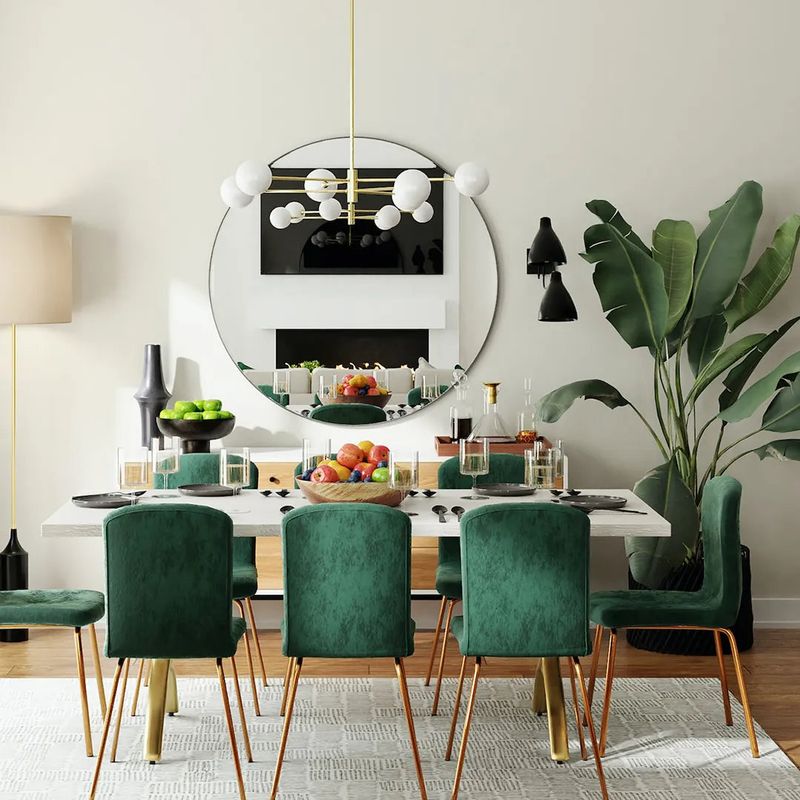
Harmonious dining spaces incorporate all five Feng Shui elements: wood (table), fire (candles/lighting), earth (ceramics/pottery), metal (utensils), and water (glass/mirrors). When balanced, these elements create complete energy harmony.
Add missing elements through accessories—a metal picture frame, wooden salt cellars, or a small fountain nearby. Each element supports different aspects of nourishment, from appetite stimulation to family bonding.
11. Maintain Spotless Reflective Surfaces

Gleaming surfaces reflect light energy throughout the dining space, activating positive chi. Regularly polish metal fixtures, shine glassware, and wipe down mirror surfaces to maximize this reflective quality.
Clean windows allow natural light to penetrate deeply, connecting indoor and outdoor energy. Feng Shui masters particularly emphasize keeping chandelier crystals dust-free, as they disperse light energy in rainbow patterns that stimulate joyful mealtime experiences.
12. Ensure Proper Chair-to-Table Proportions

Uncomfortable seating creates restless energy during meals. Chairs should allow elbows to rest comfortably at table height, with feet flat on the floor—creating physical harmony that translates to energetic balance.
Avoid chairs so plush that people sink down too low, or so rigid they encourage quick meals and departure. Proper proportions invite lingering conversations and complete digestion. Cushions in nourishing colors can adjust height while adding comfort.
13. Create Clear Dining Room Boundaries

Open-concept homes often lack energy definition between spaces. Use area rugs, lighting changes, or partial dividers to clearly define where dining energy begins and ends.
A dedicated dining space, even if small, carries stronger intentional energy than undefined multipurpose areas. Area rugs should extend at least 24 inches beyond table edges so chairs remain on the rug when pulled out, maintaining the energy boundary.
14. Honor the Command Position

Arrange your dining table so at least one seat faces the entrance without being directly in line with the door. Feng Shui practitioners call this the command position—it creates feelings of security while dining.
Nobody enjoys eating with their back to approaching energy! When someone sits comfortably seeing who enters, the entire table’s energy relaxes. Consider placing a mirror to reflect the entrance if architectural limitations prevent ideal positioning.
15. Use Natural Materials for Grounding

Synthetic materials create disconnected energy during meals. Prioritize natural elements like wooden tables, cotton tablecloths, ceramic dishes, and glass drinkware to strengthen earth connection.
Natural fibers hold positive energy longer than synthetics. Even small touches—linen napkins or bamboo placemats—significantly improve the room’s energy quality. Meals served on real materials taste better because our bodies recognize and resonate with authentic elements.
16. Repair Anything Broken Immediately
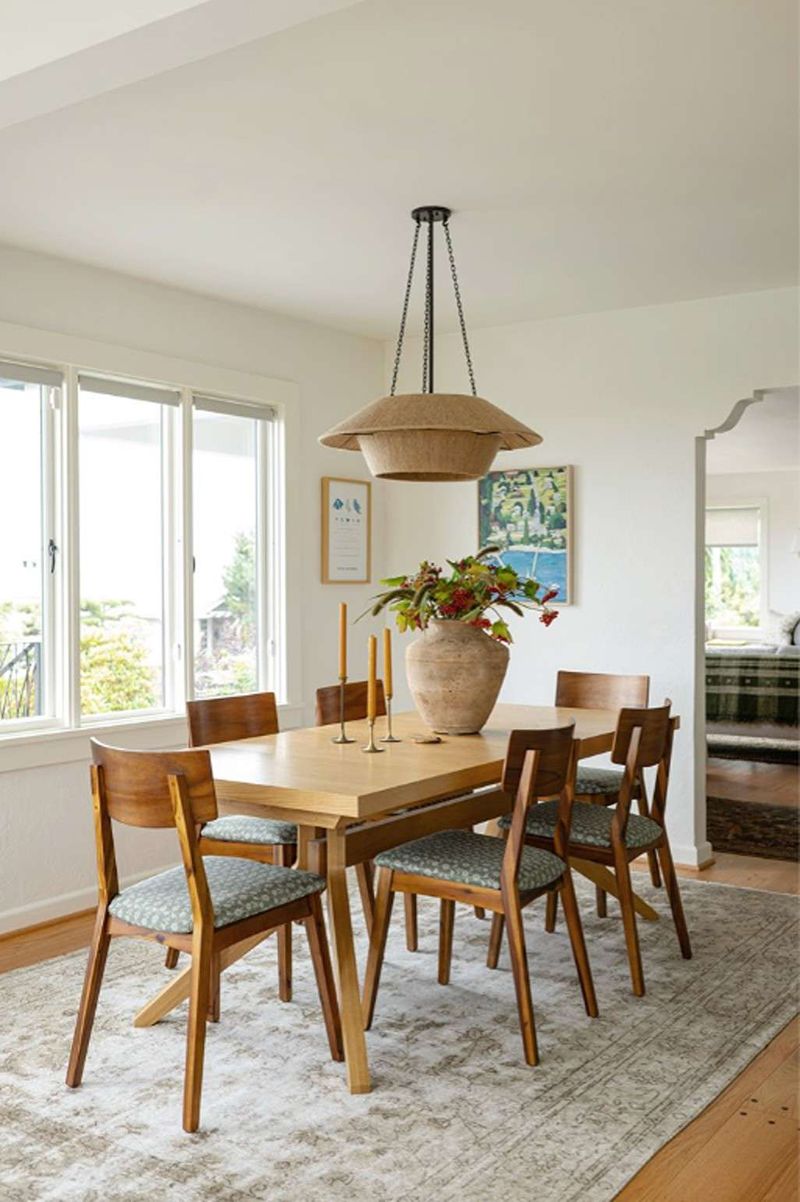
Wobbly chairs, cracked dishes, or flickering lights create unstable energy that affects everyone dining. Fix or replace damaged items promptly—broken objects symbolize broken energy flow in Feng Shui practice.
Maintaining dining room integrity shows respect for nourishment and family connection. A smoothly functioning dining space where everything works properly creates a foundation for harmonious meals. Remember: how we care for our spaces reflects how we care for ourselves.

